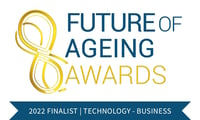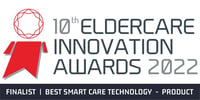Falls in a aged care home sites are one of the biggest challenges that staff and managers face, and the prevention of falls is something that can contribute greatly to the wellbeing, happiness and overall safety and quality of life of residents because it can work to minimise unnecessary injuries or worse, but it can also help residents live a fuller life free from feelings of anxiety, depression, lethargy or isolation that can be brought on because of falls or the fear of them happening.
But through harnessing the latest technology thanks to Person Centred Software’s clinical care system (mCare), aged care homes can take every measure to ensure that the full circle of falls prevention is managed – from the managing the fall and its aftermath, to analysis and insights on what caused that fall and others, to taking preventive steps based on what has been learned to ensure they don’t happen again.
Preventing falls in the first place is the number one priority in this instance, but sometimes unfortunately they will still happen. However, mCare allows users in care homes to record a fall that has occurred, ensuring that this is captured at the point of care where details of the incident are still fresh in the memory. This leads to timely reporting of falls and communicates this to the wider time in real-time. Taking any and all preventative measures relies on good communication between care staff to promote awareness of adverse events occurring in the home and by using mCare to record falls as they happen, this allows care staff to take appropriate measures for any additional interventions or observations that may be required.
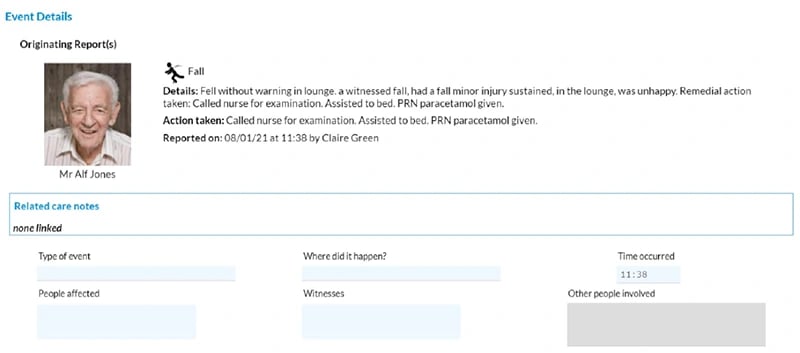
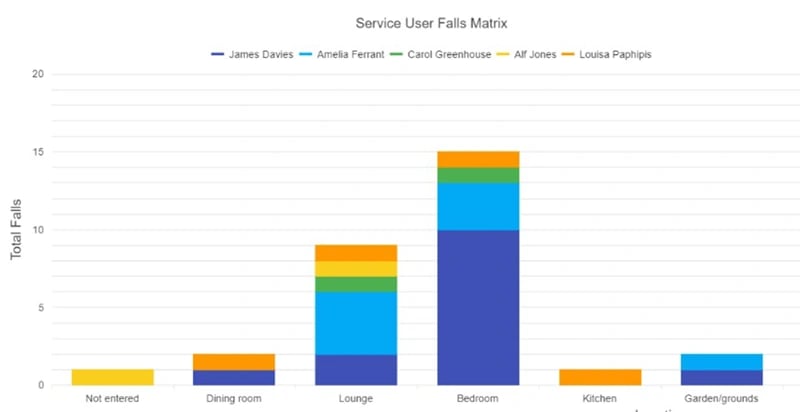
Another key aspect of preventing falls is to understand the patterns that lead to them, so that they can be anticipated and ultimately avoided. That is what makes mCare’s Falls Matrix feature so special: it provides insights into trends occurring with falls, such as the time of day, impact and location across the care site and/or communities within. This insight provides supporting evidence for any changes to care plans or operational procedures and policies. For example, knowing that there may be a higher risk of falls at handover times, or that there is a heightened risk of falling at a certain time of day if a resident rises early and needs support at a certain time, or if a pattern emerges that falls are mostly taking place in one area of the care home, can have a significant impact on the way in which care staff can prevent falls from happening in the first place and making sure that if they do, as much as possible is learned from the incident.
mCare features a ‘Multifactorial Falls Tool’ that assess the risk factors that may lead to falls taking place. It’s very important to undertake a comprehensive review of falls risk factors to ensure that every preventative measure that better enables resident safety in a care home is covered, and this tool provides suggested actions to achieve just that. It suggests actions to support residents and manage the risk of falling. Risks identified in the tool feed automatically into the care planning process. In so doing, important information about risk factors informs the care actions required, meaning that every measure can be taken to avoid easily preventable falls from happening.
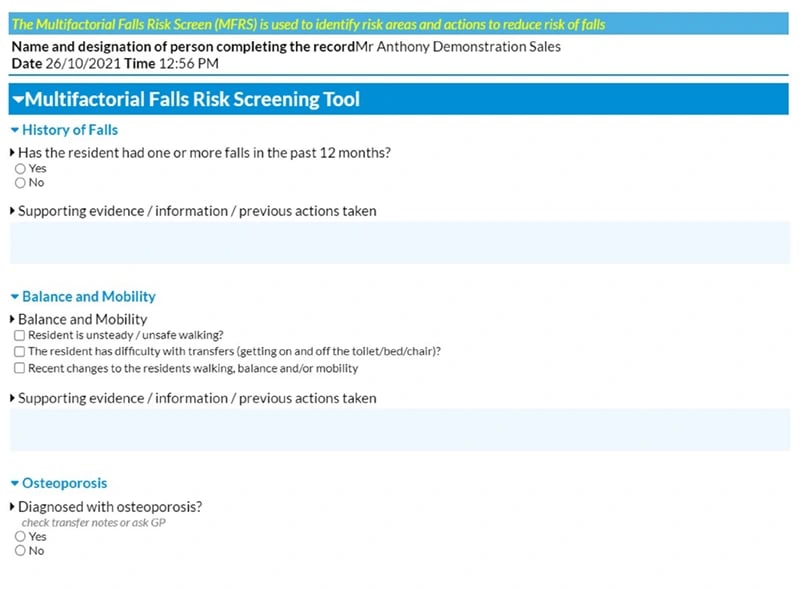
To ensure that all best practice processes are being followed, post-fall observation planned checks are automatically generated via mCare.
Adverse incidents
This is a tool that identifies risk factors that may impact the ability to safely mobilise, such as gait and balance. Special instructions on how to support a person and preferences can be recorded against the different types of transfer (for example, from one area of the home, getting up or down into a chair, and the use of stairs among others).
Pulling together data and information from care notes and other information, mCare produces a hospital pack in line with the eRedBag that includes all pertinent information around the functional abilities and risk. This promotes a continuity of care as the person transitions from one service setting to another, such as a hospital. It greatly improves the level of information, transparency and communication between a care setting and another setting, and the information can be shared electronically to healthcare professionals.
Book a demo with us today
Find out why our solutions are used by thousands of aged care & retirement living providers globally


